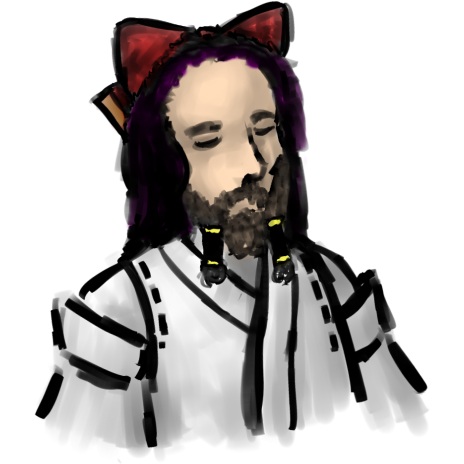- 📝 Posted:
- 🚚 Summary of:
- P0158, P0159
- ⌨ Commits:
bf7bb7e...c0c0ebc,c0c0ebc...e491cd7- 💰 Funded by:
- Yanga
- 🏷 Tags:
Of course, Sariel's potentially bloated and copy-pasted code is blocked by
even more definitely bloated and copy-pasted code. It's TH01, what did you
expect? ![]()
But even then, TH01's item code is on a new level of software architecture
ridiculousness. First, ZUN uses distinct arrays for both types of items,
with their own caps of 4 for bomb items, and 10 for point items. Since that
obviously makes any type-related switch statement redundant,
he also used distinct functions for both types, with copy-pasted
boilerplate code. The main per-item update and render function is
shared though… and takes every single accessed member of the item
structure as its own reference parameter. Like, why, you have a
structure, right there?! That's one way to really practice the C++ language
concept of passing arbitrary structure fields by mutable reference…
![]()
To complete the unwarranted grand generic design of this function, it calls
back into per-type collision detection, drop, and collect functions with
another three reference parameters. Yeah, why use C++ virtual methods when
you can also implement the effectively same polymorphism functionality by
hand? Oh, and the coordinate clamping code in one of these callbacks could
only possibly have come from nested min() and
max() preprocessor macros. And that's how you extend such
dead-simple functionality to 1¼ pushes…
Amidst all this jank, we've at least got a sensible item↔player hitbox this time, with 24 pixels around Reimu's center point to the left and right, and extending from 24 pixels above Reimu down to the bottom of the playfield. It absolutely didn't look like that from the initial naive decompilation though. Changing entity coordinates from left/top to center was one of the better lessons from TH01 that ZUN implemented in later games, it really makes collision detection code much more intuitive to grasp.
The card flip code is where we find out some slightly more interesting aspects about item drops in this game, and how they're controlled by a hidden cycle variable:
- At the beginning of every 5-stage scene, this variable is set to a random value in the [0..59] range
- Point items are dropped at every multiple of 10
- Every card flip adds 1 to its value after this
mod 10check - At a value of 140, the point item is replaced with a bomb item, but only if no damaging bomb is active. In any case, its value is then reset to 1.
Then again, score players largely ignore point items anyway, as card
combos simply have a much bigger effect on the score. With this, I should
have RE'd all information necessary to construct a tool-assisted score run,
though?
Edit: Turns out that 1) point items are becoming
increasingly important in score runs, and 2) Pearl already did a TAS some
months ago. Thanks to
spaztron64 for the info!
The Orb↔card hitbox also makes perfect sense, with 24 pixels around the center point of a card in every direction.
The rest of the code confirms the
card
flip score formula documented on Touhou Wiki, as well as the way cards
are flipped by bombs: During every of the 90 "damaging" frames of the
140-frame bomb animation, there is a 75% chance to flip the card at the
[bomb_frame % total_card_count_in_stage] array index. Since
stages can only have up to 50 cards
📝 thanks to a bug, even a 75% chance is high
enough to typically flip most cards during a bomb. Each of these flips
still only removes a single card HP, just like after a regular collision
with the Orb.
Also, why are the card score popups rendered before the cards
themselves? That's two needless frames of flicker during that 25-frame
animation. Not all too noticeable, but still.
And that's over 50% of REIIDEN.EXE decompiled as well! Next
up: More HUD update and rendering code… with a direct dependency on
rank pellet speed modifications?
